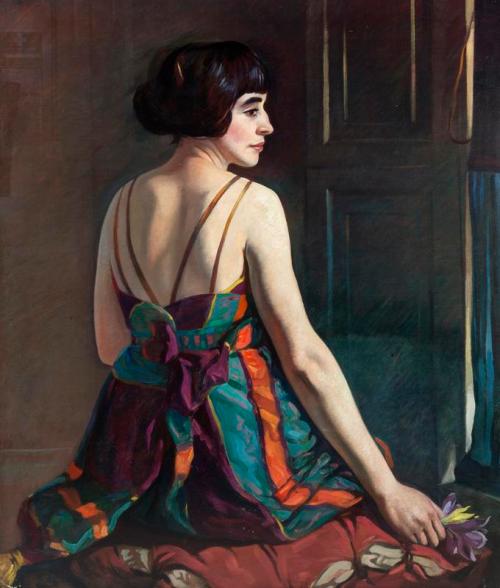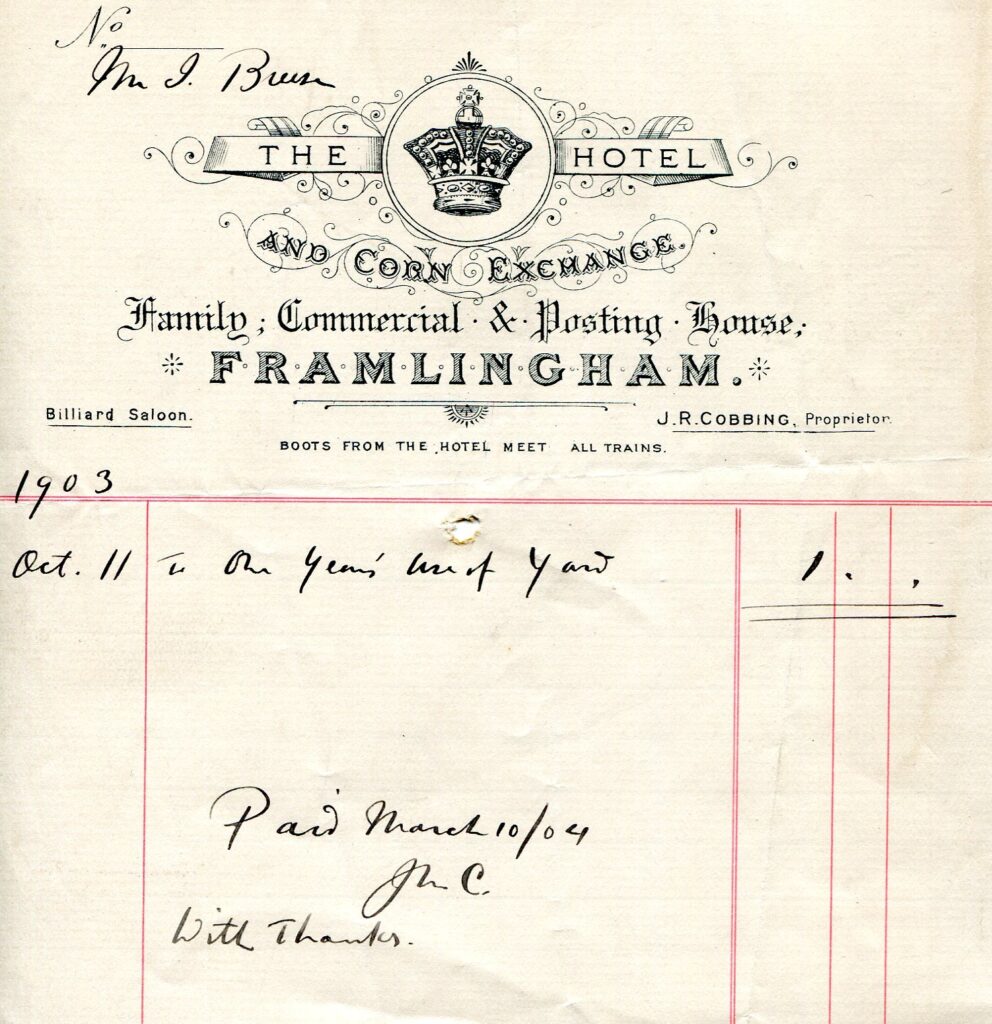Extract from the autobiography of the Scottish Artist Cecile Walton1 1891-1956, who in 1905 visited the Crown in Framlingham

The excursion to Framlingham was conducted by Francis Newbery2, then Director of the Glasgow School of Art, in the company of his daughters, Elsie and Mary. We three, in our early teens, were excited at the thought of a bicycle tour lasting the day and covering some forty miles. We had taken the road (from Walberswick) through Blythburgh, Yoxford and Peasenhall to Framlingham, and returned late in the evening by the north bank of the river Blythe, crossing the ferry below Southwold.
Into the dining-room of The Crown, Francis Newbery led his youthful following, with all the pomp and gravity of a General. He had that wonderful gift of showmanship, stimulating us at each introduction to this or that interesting or beautiful site; and at the same time making us feel ourselves to be no less important, as if river or wold or building gained something by meeting us.

We found ourselves in the cool, low-roofed room, where already the table had been laid with some dozen covers and the chairs set round the whole, almost filling the space between the sideboards and china-cupboards and the fireplace filled with tufted grasses. The table itself was decorated with flowers and impressive silver cruets, each with its quartette of crystal bottles. Beside these stood arrays of pickle-bottles, walnuts, onions, gherkins, piccalilli, red cabbage, beetroot floating in wine-dark vinegar and pale transparent cucumber in glass dishes. Of other condiments there were boats of fresh mayonnaise, French and English mustard, horse-radish and mint sauce, capers moist with saline, tomatoes, and parsley and lettuce, crisp and newly gathered. And these were but the garnish for the great joints of platters on the sideboard. The beef, well cooked outside, from its thin line of fat shaded down to the deep crimson of its raw centre. The ham was as sweet and rosy as a newly-washed babe, and sprinkled with breadcrumbs on its sugared surface – it bristled with spicy cloves.
A maid had taken us to wash our hands in a basin of cold water and showed us the ‘privy’ behind the hollyhocks in the garden… We returned to the dining-room and sat down to the table feeling fresh and hungry. The one hot dish set before us was potatoes tossed in butter and scattered with mint. They were as new and waxy as the time of year permitted, firm and unbroken.
Editor’s note:
Cecile Watson was one of the most gifted artists in Scotland during the early part of the 20th century. She, together with her artist husband, Eric Robertson 1887-1941, were the leading figures in the Edinburgh Group of artists who flourished before and after the First World War.
Francis Henry Newbery 1855-1946, who organised the tour, was a Scottish artist, and director of the Glasgow School of Art between 1885 and 1917.
This article first appeared in the FRAM Journal, October 20193.
Footnotes
- For Cecile Walton’s work, see https://artuk.org/discover/artworks/search/actor:walton-cecile-18911956.
For biographical information see Wikipedia: https://en.wikipedia.org/wiki/Cecile_Walton ↩︎ - For Francis Newbery’s work, see https://artuk.org/discover/artists/newbery-francis-henry-18551946
For biographical information see Wikipedia: https://en.wikipedia.org/wiki/Francis_Henry_Newbery ↩︎ - Journal of the Framlingham History Society, Series 7 No. 9, October 2019, p6. ↩︎
